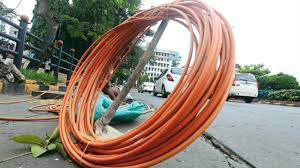MTNL defaults on loans worth Rs 8,585 crore from 7 public sector banks

Mahanagar Telephone Nigam Limited (MTNL) has defaulted on loan repayments worth ₹8,585 crore. The amount involves dues to seven public sector banks, raising concerns about the financial health of state-run telecom firms. The disclosure, made through a stock exchange filing on July 15, 2025, has caught the attention of regulators and the banking sector alike.
Loan Breakdown: Who’s Affected
As of June 30, 2025, MTNL failed to repay ₹7,794.34 crore in principal and ₹790.59 crore in interest. The following banks are involved:
- Union Bank of India: ₹3,733.22 crore
- Indian Overseas Bank: ₹2,434.13 crore
- Bank of India: ₹1,121.09 crore
- Punjab National Bank: ₹474.66 crore
- State Bank of India: ₹363.43 crore
- UCO Bank: ₹273.58 crore
- Punjab & Sind Bank: ₹184.82 crore
Union Bank holds the largest exposure, while Indian Overseas Bank follows closely. This situation increases the stress on banks already managing other non-performing loans.
Debt Burden Continues to Rise
MTNL’s total liabilities now stand at ₹34,484 crore. Out of this:
- ₹8,585 crore involves bank loans,
- ₹24,071 crore comes from sovereign-guaranteed bonds,
- ₹1,828 crore is owed to the Department of Telecommunications (DoT) as a loan to pay interest.
The company operates in Delhi and Mumbai and has struggled to remain viable. The rise of private telecom firms like Reliance Jio, Airtel, and Vi has left little room for MTNL to compete.
Why the Company Is Struggling
MTNL has failed to modernize its infrastructure. It also delayed the rollout of 4G and 5G services. Poor customer service and high operational costs made things worse. These issues led to falling revenues and rising losses.
The government once proposed merging MTNL with Bharat Sanchar Nigam Limited (BSNL). But the merger has been delayed indefinitely. Instead, BSNL is currently managing MTNL’s operations in Delhi and Mumbai under a 10-year service contract. This agreement may continue, but it’s unlikely to improve MTNL’s long-term prospects.
What the Government Is Doing
In May 2025, a top-level meeting led by the Cabinet Secretary discussed the growing crisis. Officials asked the banks not to classify MTNL’s loans as non-performing assets. That move aimed to buy time and avoid triggering regulatory action.
The government has also started looking at asset monetization. MTNL has transferred four valuable properties to the National Land Monetization Corporation (NLMC). These assets are expected to raise funds. In addition, MTNL is preparing smaller properties for sale to recover part of the debt.
Impact on Public Sector Banks
This large-scale default puts additional stress on India’s banking system. Although no single bank faces collapse, the combined exposure affects their balance sheets. The episode could influence credit ratings and lending strategies.
Experts also question the reliability of government guarantees. MTNL’s failure includes sovereign-backed loans, which adds to the risk. The incident might lead to tighter lending norms for other public sector undertakings.
Wider Telecom Sector Challenges
While private telecom companies have adjusted to changing market dynamics, public sector firms haven’t kept pace. Reliance Jio and Bharti Airtel continue to grow by investing in modern infrastructure and raising tariffs. On the other hand, MTNL and BSNL continue to lose market share.
In 2019, the government approved a ₹29,937 crore revival package for MTNL and BSNL. Despite this, MTNL hasn’t launched commercial 4G services yet. It still relies on outdated systems, struggles with high staffing costs, and lacks innovation.
What Happens Next?
The government is considering multiple paths to deal with the crisis. Some experts believe that MTNL may enter a formal restructuring process under the Insolvency and Bankruptcy Code (IBC). Others suggest creating a special-purpose vehicle (SPV) to absorb its liabilities, similar to earlier rescue plans used for the banking and power sectors.
In the short term, MTNL’s operations will remain under BSNL’s control. However, without urgent capital support and infrastructure upgrades, a recovery seems unlikely.
Conclusion
MTNL’s default highlights the urgent need for reform in India’s telecom sector. State-owned companies must adopt modern technologies, manage costs better, and compete on service quality. Without serious change, they risk becoming a permanent burden on public funds and the banking system. The government now faces a tough choice: invest more in revival or consider winding down unsustainable operations.






